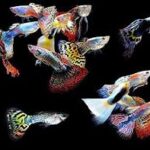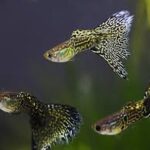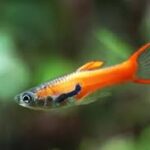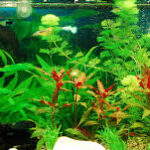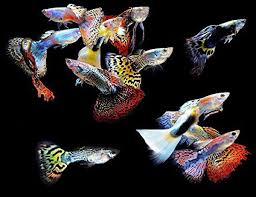Children often judge food not just by taste, but by how it looks. For picky eaters or little ones who are just beginning to explore new textures and flavors, the presentation can make all the difference. One creative and effective way to encourage children to enjoy their meals is through animal-shaped steamed cakes—soft, moist, and delicious treats molded into adorable creatures like bunnies, bears, pigs, ducks, and more.
These colorful, playful, and often cartoon-like cakes delight the eyes and engage children’s imagination while offering the wholesome benefits of steamed preparation. This article will explore the origin and appeal of animal-shaped steamed cakes, why they’re perfect for young children, how they are made, the ingredients involved, variations from different cultures, and tips for parents or businesses interested in making them at home or commercially.
Why Animal-Shaped Steamed Cakes Are Perfect for Kids
1. Visually Appealing and Engaging
Children are naturally attracted to bright colors and fun shapes. When food looks like their favorite animals or cartoon characters, it becomes more inviting. Animal-shaped steamed cakes turn snack time into playtime, sparking curiosity and excitement.
Instead of refusing plain, boring foods, kids are more likely to try something that resembles a friendly bunny, a smiling cat, or a playful dinosaur. The joy they feel when recognizing the shape can also create a positive emotional connection with food.
2. Healthier Than Fried Alternatives
Steamed cakes are made using steam rather than oil, which significantly reduces fat content. Unlike fried donuts or sugary baked goods, steamed cakes retain more moisture and are softer, making them easier for young children to chew and digest.
This makes them an ideal option for toddlers and preschoolers, especially those with sensitive stomachs or who are transitioning from baby food to regular meals.
3. Customizable and Nutrient-Rich
Animal-shaped steamed cakes can be made with a wide range of healthy ingredients. From pureed vegetables and fruits to fortified flours and dairy alternatives, they can be customized to meet a child’s dietary needs.
Parents can add mashed sweet potatoes, carrots, pumpkin, or even spinach to create natural colors and flavors. Using less sugar and incorporating ingredients like whole wheat flour, oats, or even chia seeds adds fiber and nutrients without sacrificing taste.
Popular Animal Shapes and Their Appeal
Kids often associate animals with stories, cartoons, and plush toys. Using these familiar shapes in food enhances the dining experience. Some of the most beloved animal shapes include:
- Bunnies – symbolize gentleness and often appear in storybooks.
- Bears – teddy bear shapes remind children of their toys and comfort items.
- Chicks and Ducks – bright yellow and simple round shapes, easy for toddlers to recognize.
- Pigs – especially popular in East Asian cultures, pigs are cheerful and round, symbolizing abundance.
- Pandas – with their distinctive black-and-white features, panda-shaped cakes are both cute and culturally meaningful.
- Cats and Dogs – perfect for animal-loving kids; they are familiar, friendly, and easy to stylize.
These cakes can also be tied to educational activities, such as teaching animal sounds, colors, or simple vocabulary during snack time.
The Art and Technique of Making Animal-Shaped Steamed Cakes
1. Basic Ingredients
The base recipe for steamed cakes is usually very simple. Typical ingredients include:
- All-purpose flour or cake flour (some versions use rice flour for a different texture)
- Baking powder (for leavening and fluffiness)
- Milk or plant-based milk
- Sugar or natural sweeteners (like honey or mashed fruit)
- Eggs (for structure and moisture)
- Vegetable oil or butter
- Natural food coloring (from ingredients like beet juice, spinach, pumpkin, or butterfly pea flowers)
2. Molding the Shapes
Animal shapes can be created using:
- Silicone molds – These come in a wide variety of animal shapes and are safe for steaming.
- Handcrafting details – Some cake artists prefer to manually shape features like ears, noses, or paws using colored dough or fondant-like steamed flour.
- Food-safe tools – Toothpicks, piping bags, or sculpting tools help add details like eyes or fur.
For commercial preparation, special animal-shaped cake molds or multi-compartment steamers can produce multiple characters at once.
3. Adding Facial Expressions and Details
Eyes, mouths, and noses can be added using:
- Black sesame seeds or chocolate chips for eyes.
- Cocoa powder or charcoal powder for black details.
- Colored dough for adding accents like whiskers, ears, or bows.
- Edible food markers (safe, food-grade pens used to draw on cake surfaces after steaming).
These tiny details add personality and bring each animal to life, making the cake more than just a treat—it becomes a tiny edible character.
Animal-Shaped Steamed Cakes Around the World
1. Japan – “Mushi Pan” and Kawaii Culture
In Japan, steamed cakes (called mushi pan) are often sold in convenience stores and bakeries. When shaped into animals and given “kawaii” (cute) features, they become instant favorites among children and adults alike.
Japanese versions often include matcha (green tea), azuki (red bean), and sweet potato flavors. Animal faces are delicately added to reflect the Japanese aesthetic of subtlety and elegance.
2. China – “Huā juǎn” and Character Buns
China has a rich tradition of steamed buns (mantou and baozi), and recently, many bakeries have innovated by shaping them into animals and cartoon characters. Popular during festivals or sold as novelty snacks, these buns feature both savory and sweet fillings—red bean, lotus seed paste, or even custard.
“Flower rolls” and other stylized steamed pastries often incorporate vibrant colors and playful animal faces.
3. Vietnam – Steamed Sponge Cakes (Bánh Bông Lan Hấp)
In Vietnam, steamed cakes are often made with rice flour or tapioca for a chewy texture. While traditionally served in plain round or floral shapes, some modern bakeries create animal versions for birthday parties or Tet (Lunar New Year) celebrations.
These cakes are light, fluffy, and colorful—perfect for children.
4. Korea – Animal “Bungeoppang” (Fish-Shaped) and Modern Variants
Although bungeoppang is typically baked, not steamed, Korean markets have introduced steamed cakes shaped like animals for seasonal holidays or children’s products. Using rice flour and fruit fillings, these cakes blend tradition with modern child-friendly design.
How to Make Animal-Shaped Steamed Cakes at Home: A Simple Recipe
Ingredients:
- 1 cup all-purpose flour
- 1 tsp baking powder
- 1 egg
- 2 tbsp sugar (adjustable)
- 3 tbsp milk
- 2 tbsp vegetable oil
- Food coloring (natural or safe commercial options)
- Silicone animal-shaped molds
Instructions:
- Mix the Wet Ingredients: In a bowl, beat the egg, milk, sugar, and oil until well combined.
- Combine with Dry Ingredients: Sift in the flour and baking powder. Stir until smooth with no lumps.
- Divide and Color: Divide the batter into separate bowls. Add coloring to each bowl to match different animal parts (pink for pig, yellow for duck, etc.).
- Pour Into Molds: Lightly grease silicone molds. Fill each mold with batter up to 90% full.
- Steam: Place molds in a steamer over boiling water. Steam for 10–15 minutes. Do not open the lid during the first 10 minutes.
- Cool and Decorate: Once cooled, use black sesame seeds, icing, or food markers to add eyes and other features.
This base recipe can be modified with mashed bananas, sweet potatoes, or pumpkin for flavor and color.
Educational and Social Benefits
1. Hands-On Learning Activity
Making steamed cakes can be a great hands-on activity for children. It teaches:
- Basic cooking skills
- Measuring and counting
- Color mixing
- Following instructions
Children involved in making their own food are more likely to eat it, especially when they create their favorite animal.
2. Birthday Parties and School Events
Animal-shaped cakes are perfect for themed parties or classroom celebrations. They’re allergy-friendly (especially when made dairy- or nut-free), easy to portion, and less messy than frosted cupcakes.
They also double as educational tools—use the cakes to play games, quiz kids on animals, or tell stories before serving.
Commercial Potential and Small Business Ideas
For entrepreneurs or bakers, animal-shaped steamed cakes offer a promising niche market. Here’s why:
- Unique selling point: Combines cuteness, nutrition, and creativity.
- Viral potential: Shareable on social media due to eye-catching designs.
- Custom orders: Parents often request personalized shapes for events.
- Low-cost production: Ingredients are affordable and available.
Selling animal-shaped steamed cakes at farmers’ markets, online stores, or kids’ cafés can attract health-conscious parents and children alike.
Tips for Success
- Use high-quality molds to ensure well-defined shapes.
- Avoid overmixing the batter to keep cakes light and fluffy.
- Experiment with fillings like cheese, fruit jam, or custard for surprise centers.
- Store in airtight containers to maintain moisture.
- Practice portion control – smaller sizes make for better snacks and reduce food waste.
Conclusion
Animal-shaped steamed cakes are more than just adorable—they’re a clever, nutritious, and playful way to help children enjoy their food. Combining imaginative design with healthy ingredients, these cakes can be a tool for learning, bonding, and celebration.
Whether made at home, served at birthday parties, or sold in boutique bakeries, these charming little cakes bring smiles, encourage exploration, and create delicious memories. In a world where healthy eating for kids can be a challenge, sometimes all it takes is a bunny-shaped cake and a bit of steam.
